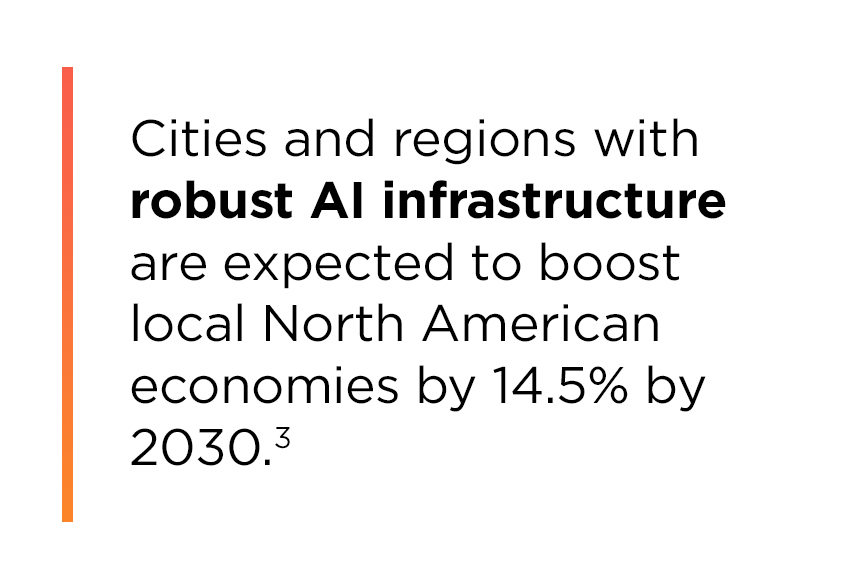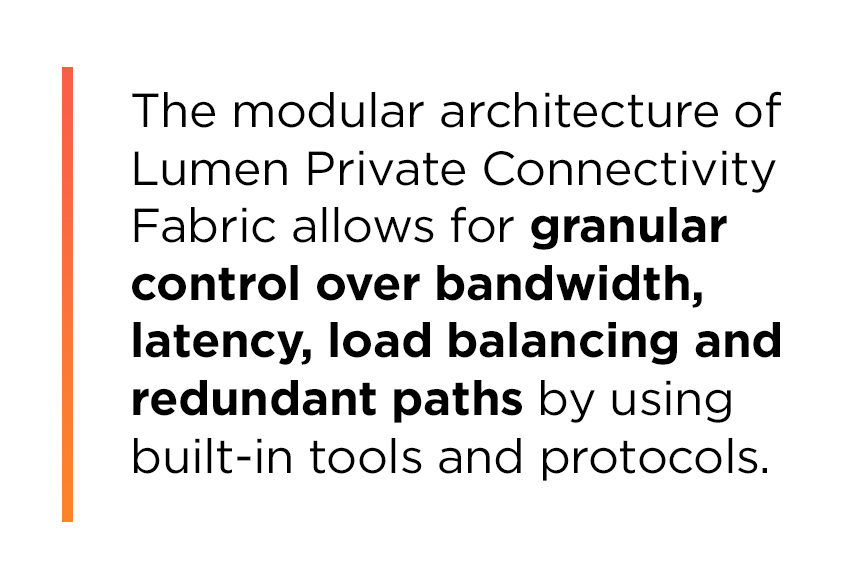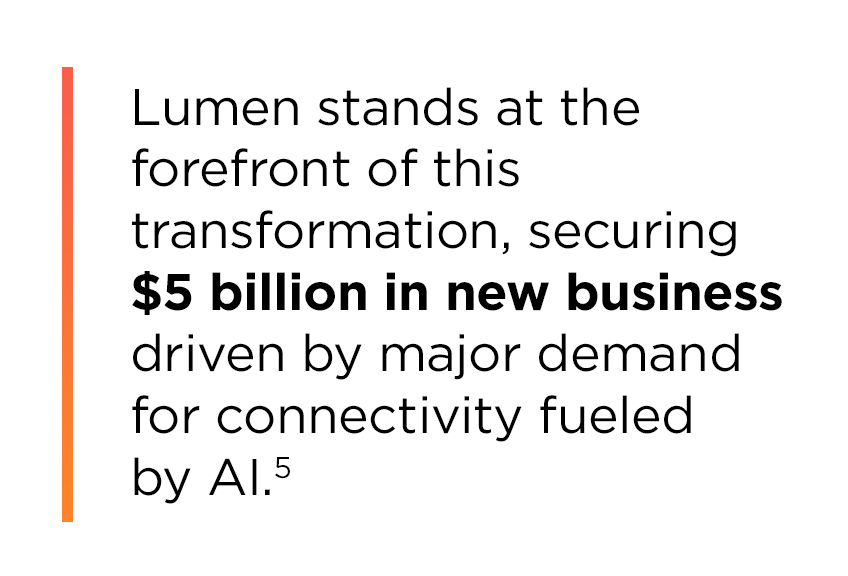AI In Government—From Hype To Hands-On Impact

AI Is Here—And It’s Changing Everything
AI has quickly become a cornerstone of daily work across the tech industry—from large enterprises and mid-sized companies to every level of government, including federal, state and local agencies. I’ve used it myself to enhance the clarity and effectiveness of my writing (including this blog), streamline research efforts and more efficiently analyze market trends. Like many professionals, I’m embracing AI’s potential to boost productivity and work smarter.
The integration of artificial intelligence into government operations is no longer a future vision—it’s already taking place. With the U.S. government announcing up to $500 billion in private sector investment to build and expand AI infrastructure, AI is poised to transform how government agencies serve the public.1,2 Together, we’ll explore key themes shaping the intersection of AI and modern government, and what it means for IT professionals across federal, state and local levels.

The Emerging Digital Landscape
It was early 2025 when the incoming administration announced its plans to fund and expand the U.S. AI infrastructure. This landmark investment signals a pivotal shift: AI is no longer just a technological advancement—it’s becoming the foundation for transforming how government serves its citizens.
For government organizations, AI has moved beyond simple technological evolution and become an accelerant for achieving core mission objectives. From enabling data-driven decision-making and real-time monitoring to automating routine tasks and strengthening cybersecurity, AI is poised to potentially transform every facet of government operations—ultimately to drive better outcomes for citizens.
Infrastructure And Connectivity Challenges
As AI continues to reshape government operations, 51% of government employees now report using an AI application at least once a day.4 This growing reliance on AI demonstrates productivity benefits, but it is also placing unprecedented demands on network infrastructure. As agencies continue to integrate AI across public services, networks must not only evolve to deliver greater bandwidth but also be smarter and more adaptable to meet the complexity and scale of modern workloads.
This is truly a unique challenge government IT leaders are facing. They must build networks that can support both current and future AI workloads while providing access across their jurisdictions. This means developing infrastructure that can:
- Enable data-driven decision-making through real-time analytics and monitoring
- Support automated processes and AI-powered services across entire jurisdictions
- Facilitate secure data sharing while maintaining privacy and compliance
- Scale to accommodate growing AI computational demands
- Enable consistent service quality from urban centers to rural communities
Introducing Lumen® Private Connectivity Fabric℠ (PCF℠)
Lumen Private Connectivity Fabric (or PCF), is a purpose-built secure network architecture tailored to the unique requirements of customers, providing the flexibility and scalability needed to meet today and tomorrow’s demands in the emerging AI economy.
Rather than a single product, Lumen Private Connectivity Fabric is a secure, scalable and modular network architecture designed to deliver high-speed, low-latency connections capable of processing large volumes of data—precisely the kind of infrastructure government organizations require to support AI-driven operations.
Core Components And Capabilities
Our Private Connectivity Fabric solution reimagines network architecture from the ground up—starting with how infrastructure is built and emphasizing the interdependence between services and capabilities. This level of strategic design is exactly what government organizations with multiple locations and inter-agency collaborations require to effectively deliver their missions and achieve meaningful outcomes. The Private Connectivity Fabric framework stresses interconnectivity across all layers, starting with waves or dark fiber, conduit, and colocation to support a secure private network.

Use Cases Across All Levels Of Government
The implementation of Lumen Private Connectivity Fabric across government organizations demonstrates its versatility in addressing diverse mission-critical needs while supporting digital transformation initiatives. Lumen has a long history of partnering with federal, state and local governments to deliver an advanced, strategic infrastructure.
The Department of Defense (DoD) runs one of the largest fiber networks in the United States and exemplifies how Private Connectivity Fabric could support critical national security missions while enhancing technological advancement. The integration of AI can play a central role in automating Security Operations Center (SOC) and Network Operations Center (NOC) functions, enhancing threat detection and response capabilities.
This past year, Lumen partnered with the state of California to develop an open middle-mile network aimed at expanding internet connectivity to businesses, homes and community institutions. This initiative is designed to connect major metropolitan areas through high-capacity fiber infrastructure while also extending access to underserved communities. In doing so, it supports critical public institutions—including healthcare facilities, educational institutions, local government offices and economic development zones—by providing the digital foundation needed to drive growth and access to essential services.
Strategic Considerations For IT Decision Makers
When evaluating network modernization initiatives, government IT leaders must address several primary interconnected priorities that will define their AI readiness:
- Funding and sustainability, including strategically utilizing federal and state funding programs for AI infrastructure
- Infrastructure control and management, such as implementing flexible network ownership models that maintain public sector oversight of operational control
- Long-term planning considerations, like building infrastructure that can scale with growing AI computational demands

The Future: AI, Connectivity And Public Service
The integration of AI into government operations represents a fundamental shift in how they serve their communities. Understanding current trends and future requirements is crucial for future success. The rapid adoption of machine learning and AI applications is driving unprecedented demand for processing power and connectivity, and an infrastructure that can support it. Agencies can look to Lumen for that infrastructure design and support.
Government networking through Private Connectivity Fabric represents more than a technical upgrade—it’s a strategic investment in future service delivery capabilities. For government leaders, the path forward requires careful consideration of both immediate needs and long-term objectives. Private Connectivity Fabric offers a flexible, scalable approach that can support current operational requirements, enable future technological advancement, maintain security and control, and create opportunities for sustainable funding through infrastructure commercialization.
The time for network modernization is now. As the divide between connected and unconnected communities grows, and as AI drives unprecedented demands on network infrastructure, government organizations must act to ensure they can continue to deliver on their missions and serve their communities effectively.
Learn how you can modernize your government agency with Lumen solutions.
1The White House, Major Investment Announcements, 2025
2Forbes, Trump’s AI Push: Understanding The $500 Billion Stargate Initiative, January 2025
3PWC, Sizing the Prize: What’s the Real Value of AI for Your Business and How Can You Capitalise?, 2020
4Lumen, Building AI-ready Networks: A Public Sector Guide to Lumen® Private Connectivity Fabric℠, 2025
5Lumen, AI Demand Drives $5 Billion in New Business and Massive Expansion of the Internet, August 2024
This content is provided for informational purposes only and may require additional research and substantiation by the end user. In addition, the information is provided “as is” without any warranty or condition of any kind, either express or implied. Use of this information is at the end user’s own risk. Lumen does not warrant that the information will meet the end user’s requirements or that the implementation or usage of this information will result in the desired outcome of the end user. All third-party company and product or service names referenced in this article are for identification purposes only and do not imply endorsement or affiliation with Lumen. This document represents Lumen products and offerings as of the date of issue. Services not available everywhere. Lumen may change or cancel products and services or substitute similar products and services at its sole discretion without notice. ©2025 Lumen Technologies. All Rights Reserved.





